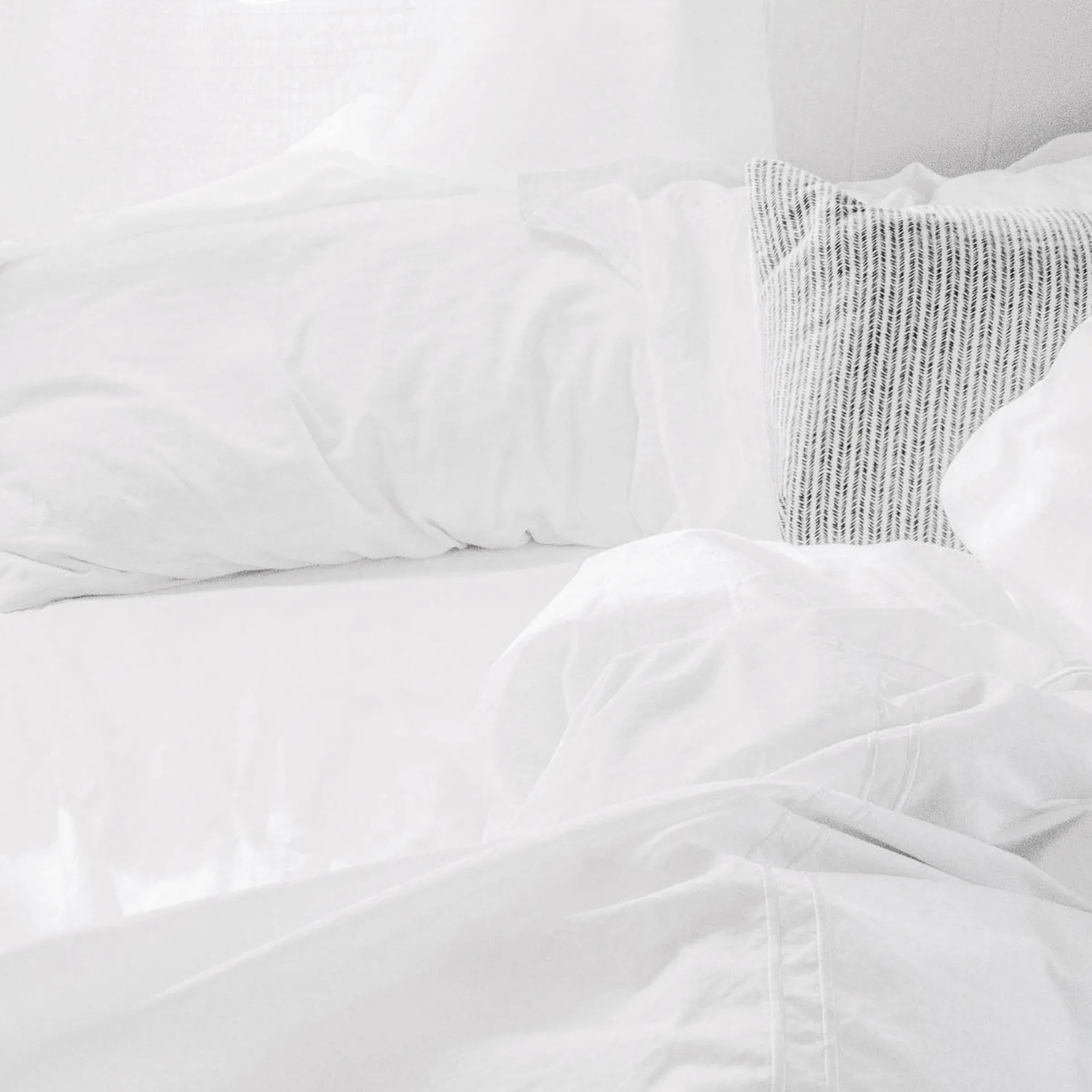Does Sauna Burn Calories? The Interesting Research Behind Your Body’s Heat Response

Ever wondered if that relaxing sauna session actually burns calories? Turns out, there’s more going on than just sweating. Your body is running a pretty complex operation in there – repairing cells, working your heart harder, and triggering processes that keep burning energy hours after you’ve toweled off. Studies suggest that regular sauna use can improve circulation, lower blood pressure, and even reduce the risk of certain cardiovascular diseases, and these benefits come with some actual calorie burn too.
The question “does sauna burn calories” has a more interesting answer than most people realize.
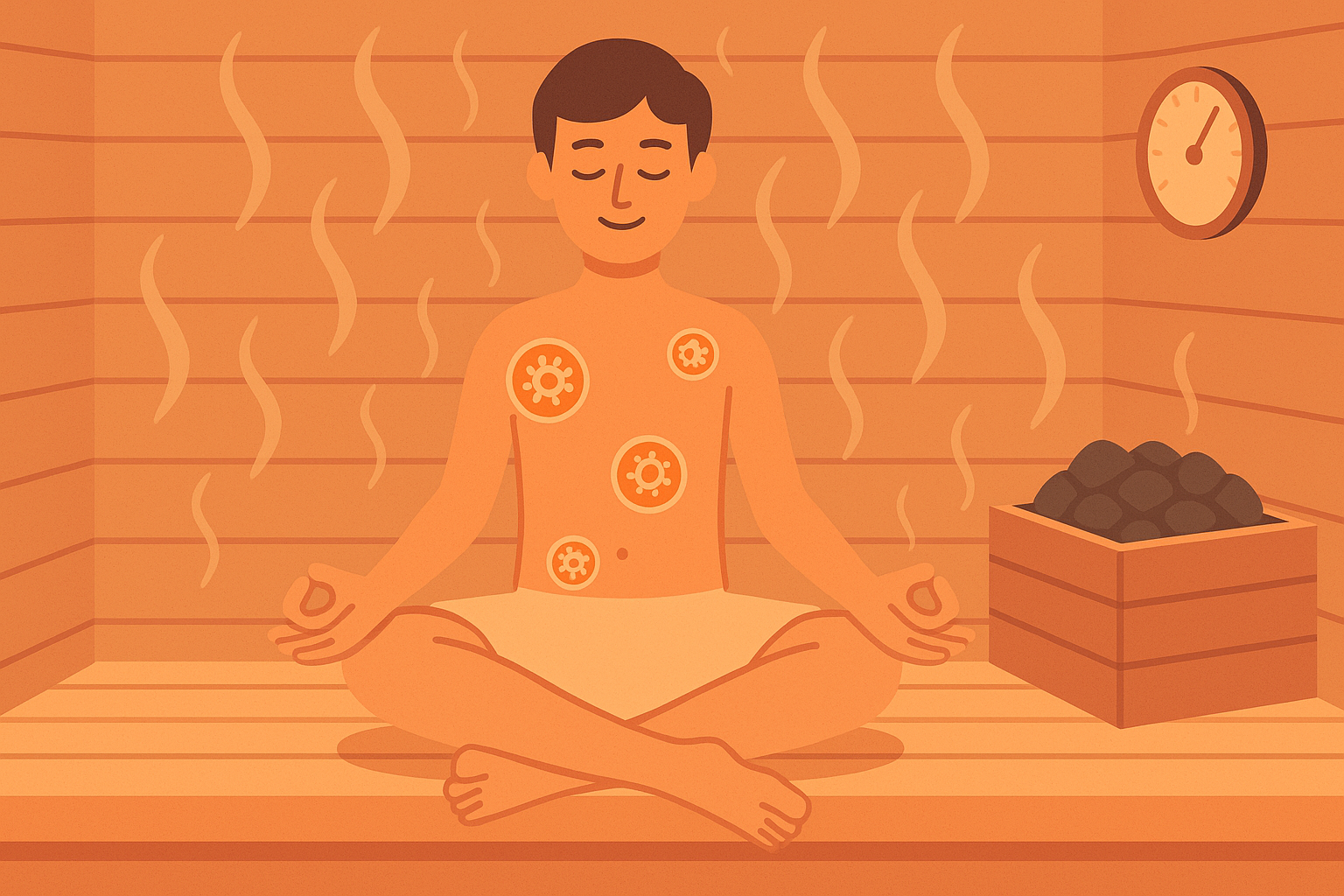
Table of Contents
- What’s Actually Happening in There: Your Body’s Heat Response
- Why Calorie Calculators Get It Wrong
- Simple Ways to Get More From Your Sauna Sessions
- Supporting Your Body During Recovery
TL;DR
- Your body burns calories through multiple processes during sauna use – not just from sweating
- Your cells make protective proteins, your heart works harder, and repair processes continue for 6-24 hours after your session
- People can have 30-50% differences in calorie burn based on muscle mass, genetics, and how hydrated they are
- Smart timing of what you eat and drink can boost your sauna’s calorie burn by 15-25%
- Regular sauna users adapt over time – they might burn fewer calories per session but often have higher daily metabolism
- Eating protein and staying hydrated helps your body make the most of the increased repair work happening after your session
When people ask if saunas burn calories, they’re usually just thinking about sweating. But there’s actually more going on under the surface.
What’s Actually Happening in There: Your Body’s Heat Response
When you step into a sauna, your body doesn’t just start sweating – it kicks into high gear with a bunch of different processes. Your cells start making protective proteins, your heart pumps harder, and your whole system works overtime to keep you comfortable in that heat.
This heat response burns calories through pathways that most fitness advice completely ignores. Understanding how many calories do you burn in a sauna requires looking beyond just the sweating to these other biological processes happening at the same time.
You know how your body responds to cold by shivering and generating heat? Well, heat exposure triggers its own set of metabolic responses that require energy too.
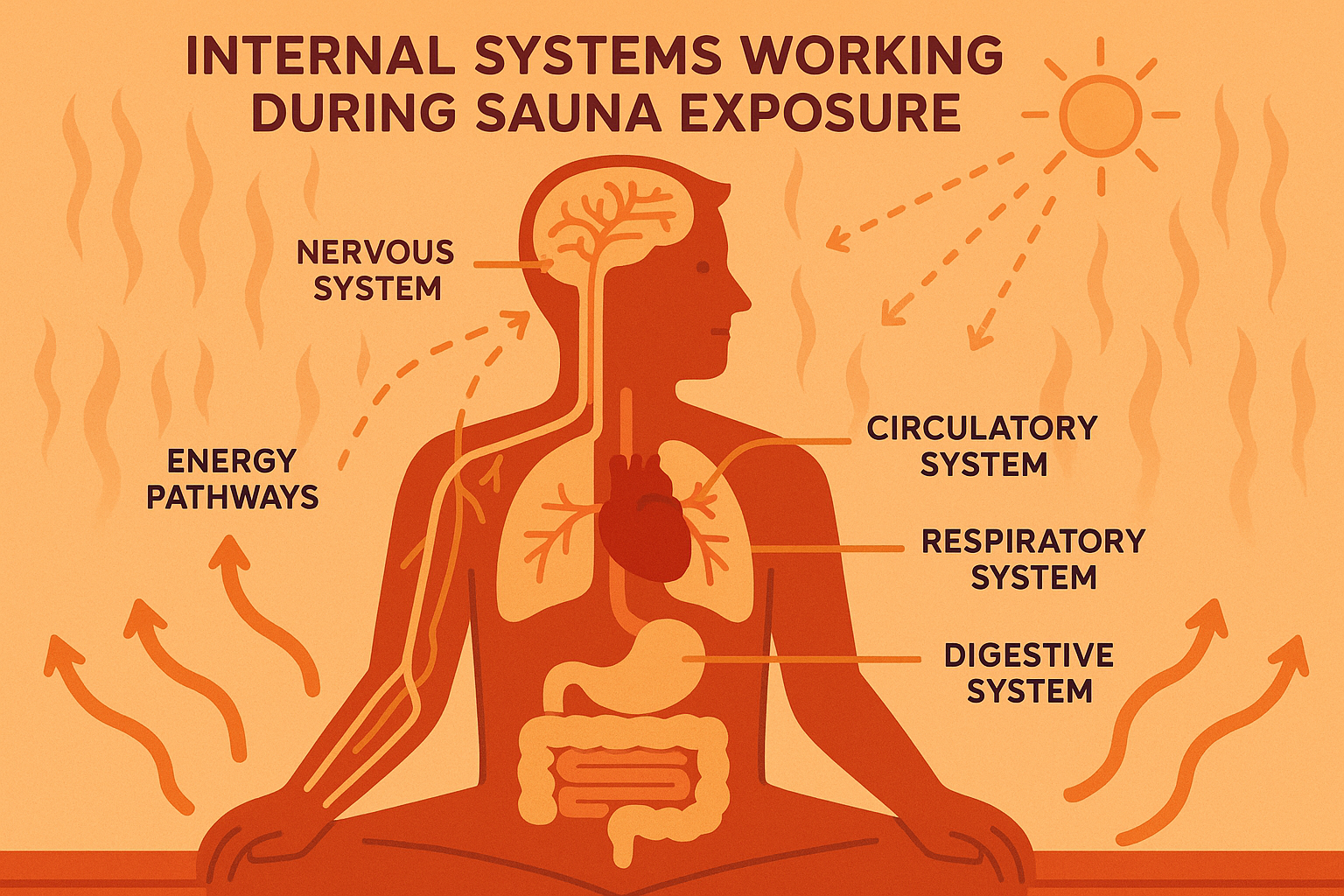
Your Body’s Busy Work Under Heat Stress
Heat stress is like giving your body a long to-do list – it has to handle multiple tasks at once, and each one costs energy. Your body’s cooling system doesn’t just flip a switch; it coordinates cell repair, blood flow changes, and active transport of minerals that all require their share of your caloric budget.
The question “do you burn calories in a sauna” becomes more interesting when you realize all this work is happening whether you feel it or not.
| What’s Happening | Energy Demand | How Long | Calorie Impact |
|---|---|---|---|
| Making protective proteins | High | 6-24 hours | 15-30 calories/hour |
| Heart working harder | Moderate-High | During session + 2 hours | 40-80 calories/session |
| Producing sweat | Moderate | During session | 20-40 calories/session |
| Cell repair work | High | 12-48 hours | 25-50 calories/day |
| Moving minerals around | Moderate | During + 4 hours | 10-20 calories/session |
Your Cells’ Protection Mode
Within minutes of sauna exposure, your cells start cranking out protective proteins – think of these as tiny bodyguards that need a lot of cellular energy to do their job. This isn’t just happening quietly in the background; it’s an energy-intensive process that can use up significant calories as your cells work to protect themselves from heat damage.
The sauna calories burned through this process alone can add up. Take Sarah, a 35-year-old who weighs 140 pounds. During a 20-minute sauna session at 180°F, her cells produce about 2-3 times more protective proteins than normal. This protein-making alone uses about 25-35 extra calories beyond her normal resting rate, and it keeps going for up to 18 hours after she’s done.
Your Heart’s Extra Workout
That faster heartbeat you feel in the sauna? Your heart is working 20-40% harder than usual to move blood around and keep your circulation going. This cardiac work translates directly into more calories burned, even though you’re just sitting there.
This is where the connection between saunas and weight loss starts to make sense. Your heart is basically doing cardio work while you relax.
The Real Work of Making Sweat
Everyone knows saunas make you sweat, but most people don’t think about what that actually costs your body. Producing each liter of sweat requires about 580 calories worth of heat energy, plus all the work needed to move sodium and water through your skin.
This manufacturing process happening all over your body helps answer how many calories do you burn in a sauna in ways most people never consider. Each drop represents actual energy your body had to spend.

The After-Effects: Your Body Keeps Working
Here’s where things get really interesting – your calorie burn doesn’t stop when you leave the sauna. Your body continues working hard for hours afterward, making proteins, restoring water balance, and keeping up the momentum you created.
This extended work period is where a lot of the real benefits happen, but it’s completely invisible to most sauna users. The sauna calories burned during this recovery phase often exceed what happens during the actual session. Do saunas help with weight loss? Yes, and much of that benefit comes from this extended period where your metabolism stays elevated.
The Protein-Making Marathon
Heat stress triggers a 6-24 hour protein-making marathon in your body. Your cells are busy producing protective proteins and fixing heat-related damage, which requires ongoing amino acid processing and energy.
This keeps burning calories long after you’ve cooled down. It’s similar to how your body responds to other wellness practices – the work continues well after the initial trigger.
The Hidden Cost of Getting Rehydrated
Getting your fluid balance back after a sauna session requires active pumping of sodium and potassium, cellular rehydration, and restoring electrolyte balance through energy-demanding processes. Each step costs calories that add to your total energy expenditure.
Most people asking “do you burn calories in a sauna” never think about these recovery costs. Your body is still working hard even after you’ve toweled off.
The Plot Twist: How Regular Use Changes Things
Here’s something interesting – regular sauna users experience a metabolic trade-off. Their bodies get better at handling heat stress, which changes their calorie-burning patterns in unexpected ways.
You might burn fewer calories per session as you adapt, but your overall metabolic capacity and daily energy expenditure can actually increase. This complex relationship challenges what we think we know about sauna calorie burn. The relationship between saunas and weight loss becomes more nuanced for experienced users, though the benefits often become more pronounced over time.
Getting Better at Making Protective Proteins
Regular sauna users develop the ability to produce protective proteins more efficiently, reducing some of the immediate energy costs while building better baseline metabolic health. Your body essentially gets better at the cellular repair process, meaning less energy spent on emergency responses but more invested in long-term improvements.
Cellular Power Plant Upgrades
Regular heat exposure acts as a stimulus for improvements in your cellular powerhouses – they become more efficient at producing energy. This enhanced function can increase your overall metabolic capacity, potentially raising your daily energy expenditure even when you’re not in the sauna.
These improvements work similarly to other metabolic enhancement strategies that boost overall energy production and metabolic health.
Heart Efficiency Improvements
Regular sauna users develop better cardiac efficiency, meaning their hearts don’t have to work as hard during sessions. While this might reduce per-session calorie burn, it often leads to better cardiovascular health and maintained elevated metabolism throughout the day – a net positive for overall energy expenditure.

Why Calorie Calculators Get It Wrong
Standard calorie-burning estimates for saunas are pretty much useless because they’re based on oversimplified assumptions. These calculators can’t account for your unique metabolic makeup, how adapted you are to heat, or the dozens of individual factors that create huge variations in actual energy expenditure.
Relying on generic formulas misses the real science entirely. The sauna calories burned by one person can be dramatically different from another person of identical weight and age. Do saunas burn calories? Yes, but the amount varies wildly based on individual factors most calculators completely ignore.
Your Personal Metabolic Fingerprint
Your sauna calorie burn is as unique as your fingerprint, influenced by factors that most wellness content completely ignores. Body composition, genetics, and individual metabolic variations create such dramatic differences that two people of the same weight can have completely different energy expenditure in identical sauna conditions.
Understanding these personal factors is crucial for realistic expectations about whether saunas help you lose weight in your specific situation.
| What Affects Your Burn | Impact Level | How Much Variation | What to Know |
|---|---|---|---|
| Muscle Mass | High | +40-60% | More protein production |
| Body Fat Percentage | Moderate | -20-30% | Less metabolically active |
| Your Genetic Heat Response | High | +30-50% | Some people just respond more |
| How Hydrated You Are | Moderate | +15-25% | Affects how efficiently cells work |
| How Used to Heat You Are | High | -25-40% | Regular users burn fewer per session |
| Age | Moderate | -10-20% per decade | Metabolism naturally slows |
The Muscle Mass Factor
Muscle tissue is like a protein-making factory compared to fat tissue. If you have more muscle mass, you’re experiencing significantly greater caloric expenditure through cellular repair processes that fat tissue simply can’t match.
This explains why some people feel completely wiped out after sauna sessions while others barely notice the impact. How many calories burned in sauna sessions depends heavily on your muscle-to-fat ratio.
Take two 160-pound people: Mike with 15% body fat and 25 pounds of muscle, versus Tom with 25% body fat and 15 pounds of muscle. In identical 20-minute sauna sessions, Mike’s muscle tissue produces 40-60% more protective proteins, resulting in about 30-45 additional calories burned during the session and recovery period.
Your Genetic Heat Response
Some people are just genetically wired to be better heat responders, creating 30-50% variations in how individuals respond to heat stress metabolically. Some people burn calories intensively, while others have more conservative metabolic reactions.
Your DNA literally determines how much energy your sauna sessions demand from your system. This genetic component significantly influences whether do saunas help you lose weight for your particular biology.
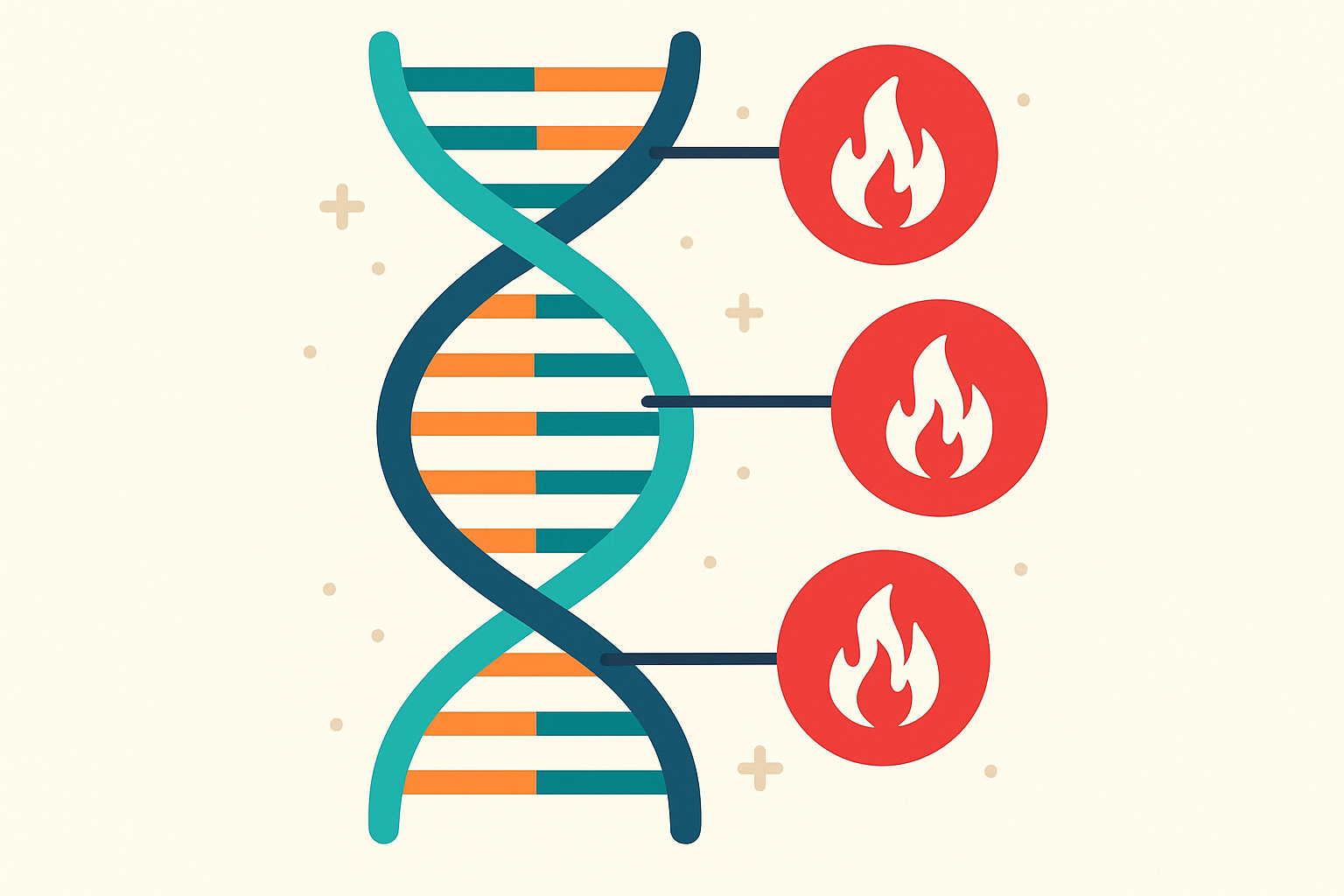
The Hydration Game-Changer
Most people walk into saunas in various states of dehydration without realizing how dramatically this affects their caloric expenditure. Your hydration status doesn’t just influence comfort – it fundamentally changes the metabolic processes and energy demands of heat exposure.
Proper hydration can be the difference between an efficient calorie-burning session and a sluggish experience. The impact on sauna for weight loss goals can be substantial.
Pre-Hydration Benefits
Good hydration before sauna use can increase caloric expenditure by improving how efficiently your cells work and transfer heat. When your cells have enough water, they can engage in the energy-demanding processes of heat adaptation more effectively, leading to greater overall metabolic impact from your session.
The Electrolyte Energy Factor
Maintaining proper sodium, potassium, and magnesium levels during heat exposure requires active transport processes that significantly impact total energy expenditure. Your body is actively working to maintain electrolyte balance, and that work costs calories that standard calculators never account for.
These transport processes contribute meaningfully to sauna weight loss potential through their energy demands.
Simple Ways to Get More From Your Sauna Sessions
The real sauna calorie-burning benefits happen when you combine heat exposure with smart strategies that amplify the metabolic effects. What you do before, during, and after your sauna session can dramatically influence your total energy expenditure.
This isn’t about working harder in the sauna – it’s about working smarter with your body’s natural responses. Smart optimization can make the difference between modest benefits and significant sauna to lose weight results. Understanding how to make saunas burn calories more effectively requires attention to timing and preparation.
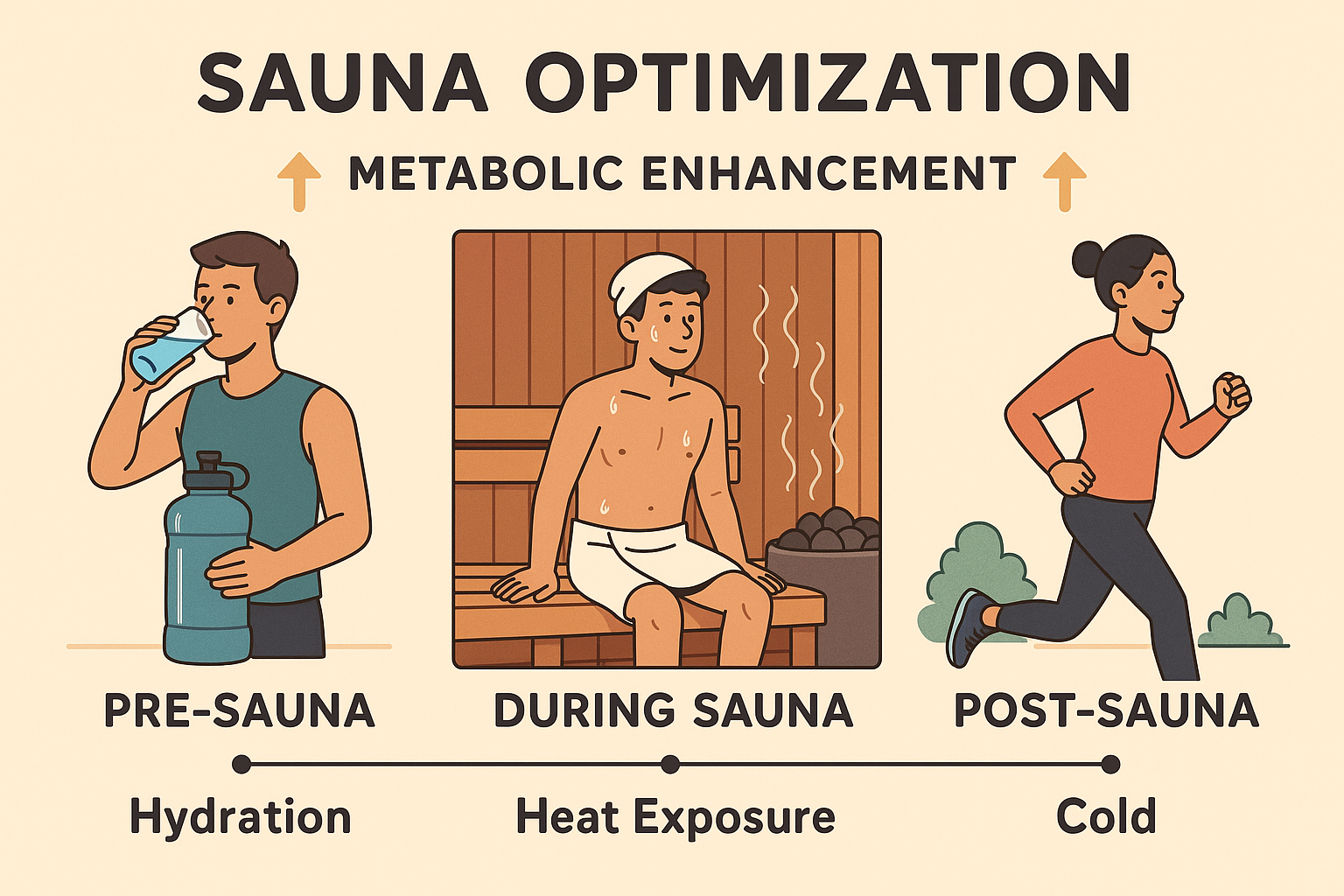
Smart Eating and Drinking Timing
What and when you eat and drink around sauna sessions can dramatically influence caloric expenditure and benefits. Your body’s increased protein making and cellular repair create windows of opportunity where smart nutrition can amplify the energy-demanding processes already happening.
Timing becomes everything when you’re trying to maximize benefits. The question of can you lose weight in a sauna becomes much more promising when you optimize these windows.
This approach works similarly to other metabolic optimization strategies, like how intermittent fasting timing can enhance cellular repair and metabolic flexibility.
Before Your Session
Having specific amino acids 30-60 minutes before sauna use can enhance protective protein production and increase energy demands. Your body uses these building blocks to fuel the intensive cellular repair processes that heat stress triggers, essentially priming your system for higher calorie expenditure during your session.
After Your Session
Smart protein and electrolyte timing can extend the metabolic window and amplify caloric expenditure for hours after your session. Your body is in an elevated state of protein synthesis and cellular repair – feeding it the right nutrients at the right time keeps this energy-demanding process running efficiently.
This approach significantly influences whether is a sauna good for weight loss in your routine.
Before Your Sauna:
- Have 10-15g amino acids or protein 45-60 minutes before
- Drink 16-20oz water with electrolytes 30 minutes before
- Avoid heavy meals 2 hours before sauna use
- Consider 500mg magnesium 1 hour before for better cellular function
- Take 1-2g vitamin C to support protective protein production
Adding Movement That Helps
Light movement before, during, or after sauna sessions can boost caloric expenditure through better circulation and metabolic activation. This isn’t about turning your sauna into a workout – it’s about smart movement that supports and amplifies the processes already happening in your body.
The impact on is sauna good for weight loss outcomes can be substantial when movement is properly integrated.
Pre-Heating Preparation
Light movement before entering the sauna primes your cardiovascular system and can increase total session caloric expenditure by 15-25%. This preparation gets your blood flowing and your metabolic systems activated, creating a foundation for more intensive energy expenditure once heat stress begins.
How many calories are burned in a sauna increases meaningfully when you prepare your body properly beforehand.
Jennifer, a 42-year-old marketing executive, discovered that doing 8-10 minutes of gentle yoga flow before her evening sauna sessions increased her heart rate variability and extended her post-sauna metabolic elevation by an additional 3-4 hours. This simple pre-heating routine added about 25-35 calories to her total session expenditure.
After-Session Movement
Gentle stretching or walking immediately after sauna use extends the elevated metabolic state and enhances the overall caloric impact. Your body is already in an energy-demanding recovery mode – light movement keeps this process active and prevents the metabolic momentum from dropping off too quickly.
This approach directly affects does sitting in a sauna burn calories by extending the active phase beyond just sitting there.
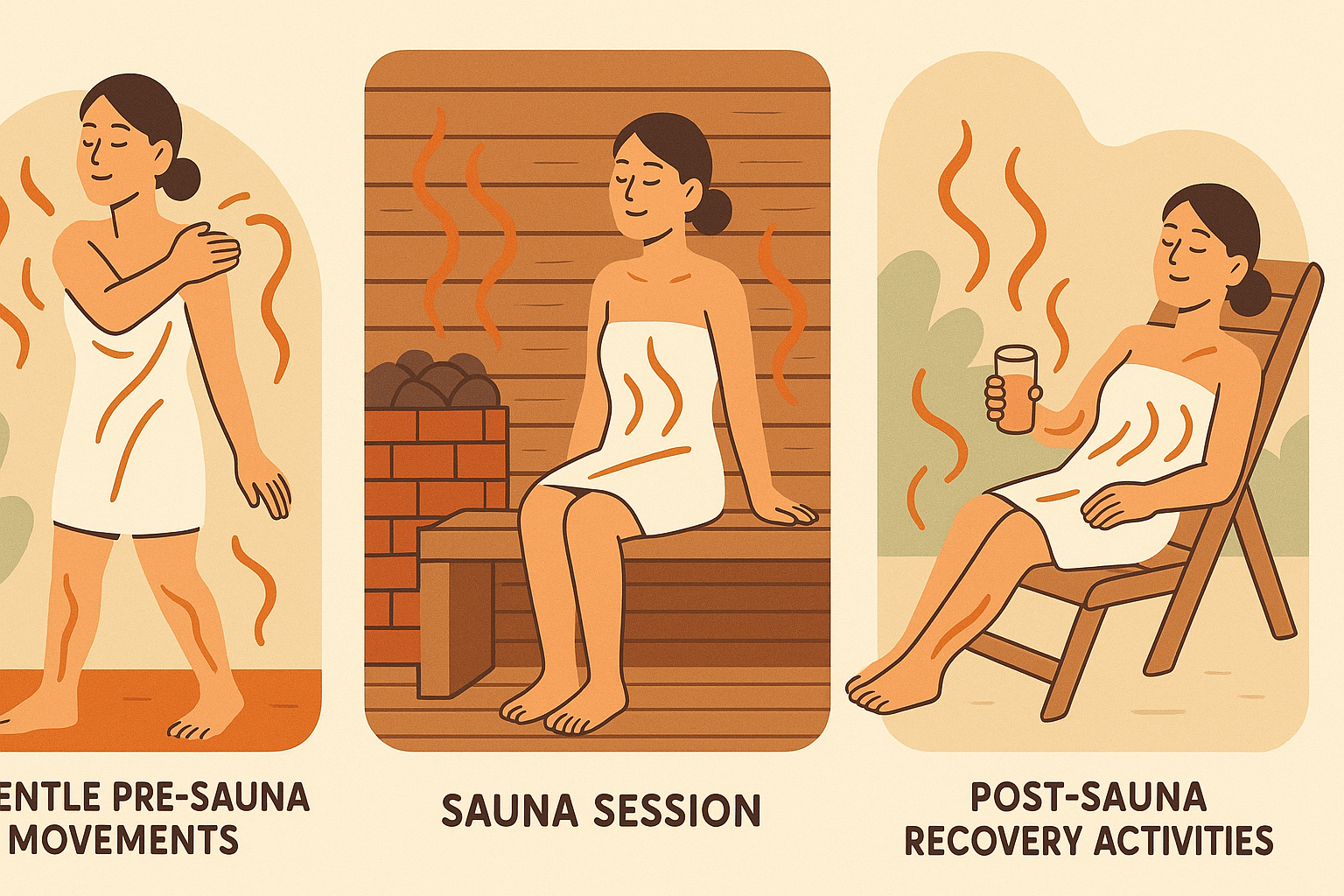
Supporting Your Body During Recovery
Getting the most from sauna benefits means supporting your body’s increased metabolic demands with quality nutrients that enhance cellular repair and recovery processes. Your sauna sessions are creating elevated nutritional needs that most people completely ignore, missing opportunities to amplify both immediate and long-term benefits.
Understanding how does a sauna burn calories at the cellular level reveals why nutritional support becomes so important during recovery phases.
Helping Your Cells Repair
The increased protein synthesis and cellular repair triggered by sauna use creates elevated nutritional needs that most people don’t address properly. Your Your body is working overtime to repair and protect cells from heat stress – providing the right building blocks can enhance this process and increase the metabolic benefits of your sauna practice.
Does using a sauna burn calories more effectively when you support these repair processes? Absolutely, and the difference can be noticeable.
Supporting your body’s increased repair demands connects to broader wellness strategies that optimize cellular function through targeted interventions.
Supporting Collagen Production
Heat stress increases collagen turnover, making this an optimal time to support your body with high-quality collagen that can enhance the metabolic benefits of your sauna practice. Your body is already ramping up protein synthesis – providing good collagen gives it the raw materials to maximize this energy-demanding process.
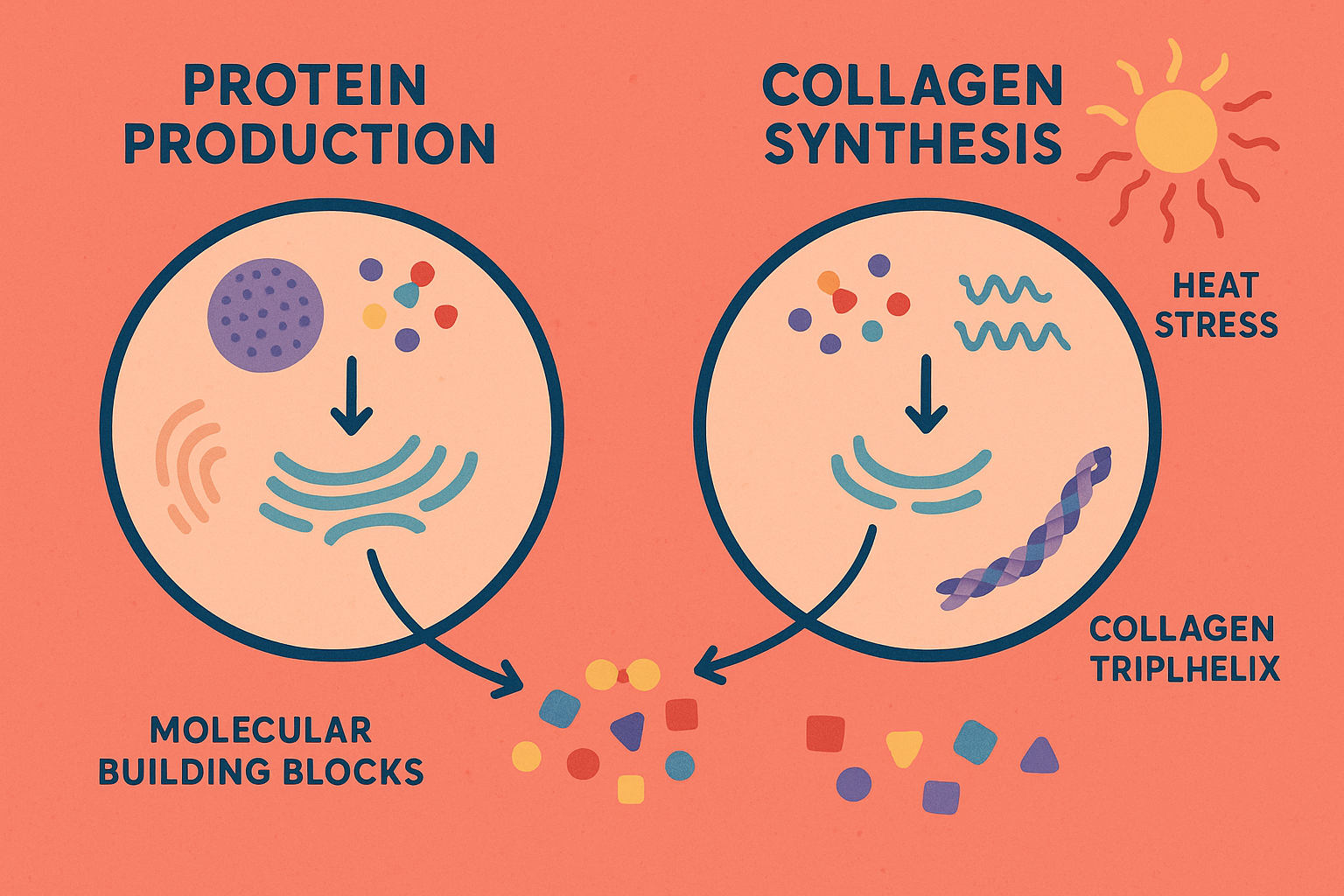
Simple Steps to Get More From Your Sauna Sessions:
- Before You Go In (30-60 minutes before):
- Drink water with electrolytes
- Consider collagen supplementation to support increased protein making
- Do 5-10 minutes of light movement
- During Your Session:
- Find a comfortable position to maximize heat exposure
- Practice steady breathing to support your heart’s extra work
- Stay for 15-20 minutes to fully activate the metabolic processes
- Right After Your Session:
- Rehydrate gradually with clean water
- Support ongoing protein synthesis with additional collagen
- Do gentle movement for 5-10 minutes
- The Next 6-24 Hours:
- Eat clean, whole foods to support increased metabolic demands
- Consider adaptogenic supplements to support cellular resilience
- Keep drinking quality water consistently
After Your Sauna Checklist:
- Drink 20-24oz water within 30 minutes
- Eat protein within 2 hours to support ongoing synthesis
- Replace electrolytes with clean, mineral-rich sources
- Avoid alcohol for 4-6 hours to support cellular repair
- Get quality sleep to maximize recovery benefits
- Check your urine color to make sure you’re properly rehydrated
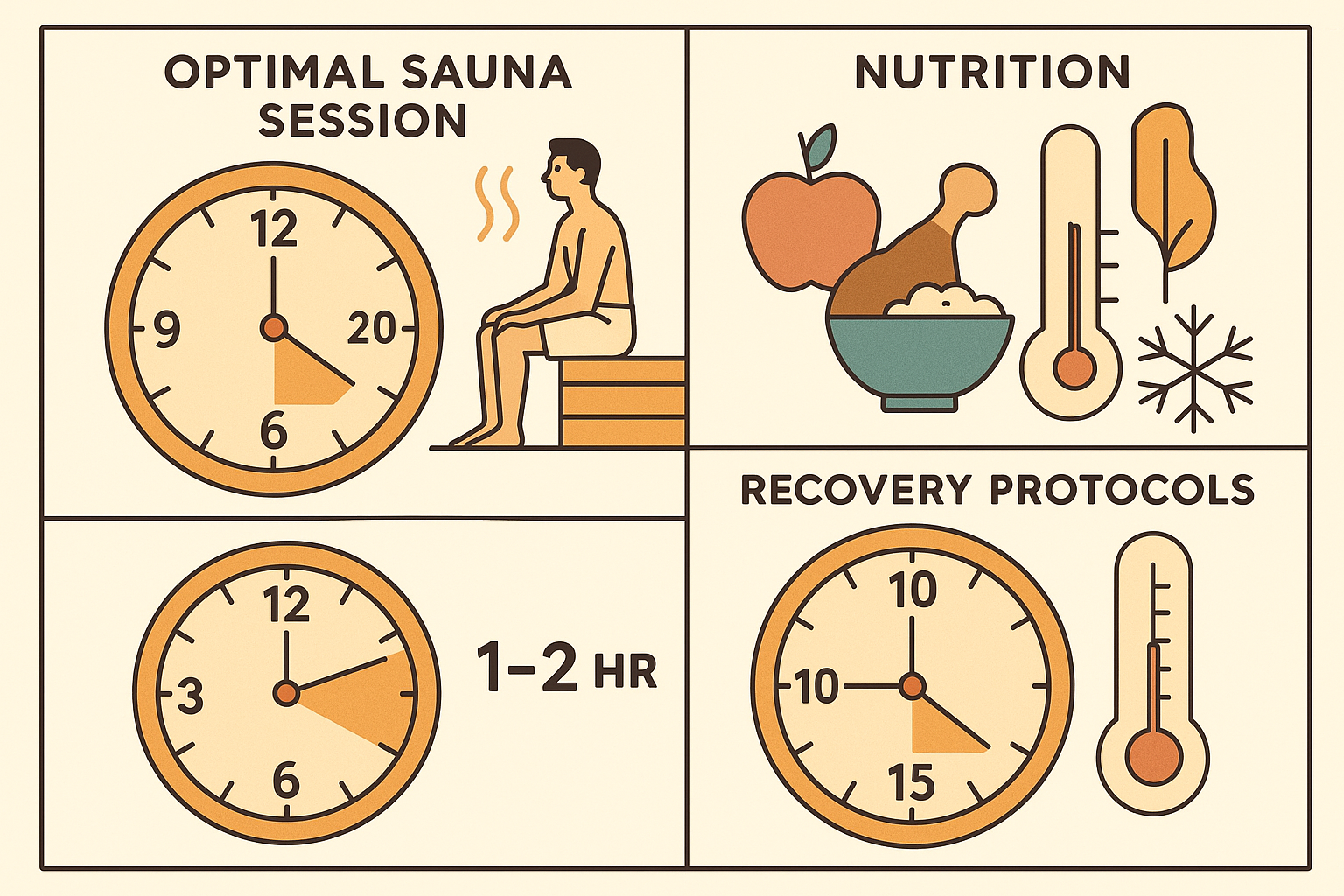
When you’re looking to support your body’s elevated metabolic state with the cleanest, most effective nutrients available, Organic Authority’s rigorous approval process ensures only the most bioavailable products make it to their platform. Their marine collagen becomes particularly relevant during the post-sauna recovery window when your body is actively synthesizing new proteins and repairing cellular structures – maximizing both immediate and long-term benefits of your sauna practice.
Final Thoughts
Understanding how saunas really burn calories has completely changed how I approach my sessions. Your body is running a complex operation that continues working long after you’ve cooled down. The cellular repair, heart work, and protein synthesis create energy expenditure that goes far beyond what any standard calculator can measure.
What’s exciting is realizing how much control you have over amplifying these benefits. Smart hydration, movement timing, and nutritional support can dramatically increase your sauna’s metabolic impact. Your individual factors – from muscle mass to genetics – mean your experience will be unique, but understanding these mechanisms gives you the tools to optimize your personal calorie-burning potential.
Look, we’re not talking about massive calorie burns here – this isn’t going to replace your gym session. But every little bit adds up, right? And when you support your body’s elevated demands with quality nutrients during those crucial recovery windows, you’re maximizing the metabolic benefits you’re working to create.
Bottom line: Saunas do burn calories, but don’t expect miracles. Think of it as a nice bonus to your regular routine. The relaxation benefits might be worth more than the calorie burn anyway. Scientists are still figuring this stuff out, and your mileage may vary – this is just one piece of the puzzle.


